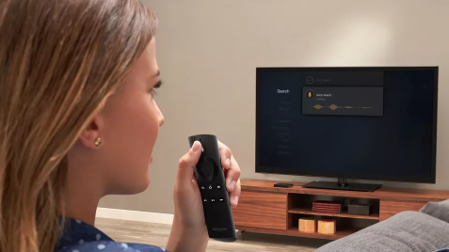Voice Search: Increasing Adoption and Engagement
When voice search launched on personal devices, the feature was touted as a “personalized” search engine. But when users asked their device, “Find me a restaurant,” it wouldn’t know that the user didn’t like French food and that it should remove French restaurants from the search altogether. Arguably, this isn’t truly personalized.

Home assistants face the same challenge. Amazon Alexa can now recognize different voices and accents, however it still cannot respond to complex, conversational queries, such as “What’s on TV tonight?” without installing a specialist skill. This is despite TiVo finding the phrase, “What’s on TV tonight?” as one of the most frequently occurring voice searches performed at any given time.
To ensure a positive experience in the TV space, it is critical that pay-TV providers offer users accurate, personalized voice search from the get-go. Rather than pull up the standard TV guide when users ask, “What’s on TV tonight?”, the response should highlight the top shows that it knows the viewer will be most interested in watching. Consumers recognize voice search as a much easier method to find something to watch on TV, when compared to remote control-driven keyboard text search. However, the key is being able to facilitate a conversation that takes into account personalization and intent.
A COMPETITIVE ADVANTAGE
When it comes to increasing voice search functionality, pay-TV providers already have a head start. Their abundance of data gives them a major competitive advantage over personal and home assistant devices, as they know subscribers’ viewing behavior, such as their favorite TV shows, music, actors and sports. In turn, this will enable a truly personalized voice search offering.
Artificial intelligence (AI) and machine learning techniques can also help pay-TV providers to provide viewers with intuitive voice enabled discovery. Through delving into the high-quality metadata from their large back catalogues and informing the entertainment experience, AI and machine learning methods would make television viewing more fluid. This is ideal for improving the relevance of search results and recommendations, as users will be able to ask naturally spoken questions and follow-up queries that the technology will understand. The user would be able to engage in a normal, free-flowing dialogue. For example, if they asked the system “Find me a Tom Hanks movie,” then specified “just comedy movies,” then also added “from the 80s,” results like “Big,” “Bachelor Party,” “The Burbs” and “Dragnet” would materialize. Performing a similar search with a text-based remote would prove far more burdensome, if possible at all.
With this backbone of data, pay-TV providers have two major hurdles to cement voice search as a preferable search mode:
Personalization: Voice search will become the norm when a device knows the user’s preferences and likes. For example, when a father asks the set-top box, “What’s on TV tonight?” his results should differ from his teenage son’s results for the same request. Similarly, if a mom asks, “Is Chelsea on?” the device will recognise that she watches a considerable amount of the TV show “Chelsea” on Netflix and does not mean the next Chelsea Football Club game. Again, the pay-TV provider already has this data; implementing it to the fullest would ensure the highest quality user experience for voice search, ultimately providing additional value to viewers.
Intent: When selecting a voice search platform, pay-TV providers must choose one that understands viewer intent when searching and can connect viewers with the desired content using natural language. The device must be able to infer what the user is talking about, as well as the type of search. For example, is the user looking for a TV show, a personality or a sports team? The device must also understand the end goal. For example, does the viewer want to play the latest episode, find where the game is, or record the show?
The professional video industry's #1 source for news, trends and product and tech information. Sign up below.
Essentially, the most critical element of voice search offerings for pay-TV providers is understanding viewers, their preferences, what they like to watch and what they don’t like to watch. It’s then about associating personalization with viewer intent, which should be an important part of pay-TV providers’ solutions.
EDUCATING USERS
According to TiVo’s “Q2 2017 Video Trends report,” which shows a breakdown of voice search types conducted by viewers from a major pay-TV provider, nearly 92 percent of all voice searches are for a particular show title or TV channel. However, only around 4 percent of searches use conversational searches, or requests for video content personalized to the end viewer, such as “What’s on TV tonight?”, “When is the Chelsea game on?”, or “Find me comedies.” This low usage level implies that there is a lack of education in the TV space, as viewers are likely unaware that they can do more with voice search on their TV than with their personal or home assistant devices. Indeed, they can pose much more complex, conversational queries. For example, “Show me some James Bond movies” and then following that up with “The ones with Roger Moore.”
TRUE PERSONALIZED SEARCH ENGINES
When personalization and intent are integrated into pay-TV providers’ voice search offerings, true personalized searches will become apparent. To make this a reality, pay-TV providers need to increase efforts to educate viewers on available options and clearly distinguish their service offerings from those of home assistant devices. This is similar to when content could be viewed on a mobile and/or streaming device; once pay-TV providers demonstrated to viewers what features are available, there was a considerable increase in multi-screen use for watching TV. Voice search usage in the TV space will likely lead down the same path.
This story originally appeared on TVT's sister publication TVB Europe.
